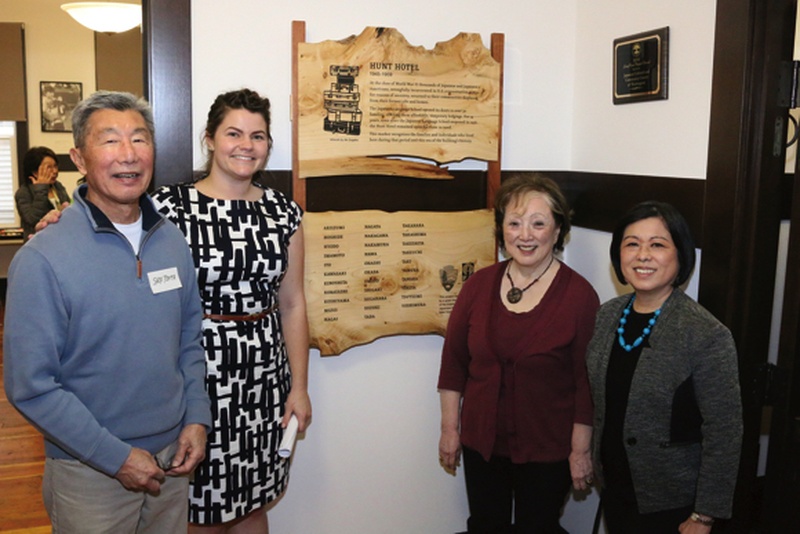JCCCW President Kurt Tokita recalled a meeting over 10 years ago when the Japanese Cultural & Community Center of Washington’s project was on the table. It was the first time he heard about his own connection to the building, where his father Shokichi and family lived temporarily from 1945 to 1947.
“Since then, the cultural center project has become really personal for me,” Tokita said.
Not only Tokita but the community still remembers rich stories of their “center,” which was a daily Japanese language school for a thousand children. It was occupied as a military facility during World War II and was a temporary hostel for those who returned from incarceration camps after World War II.
Each of these stories is still a colorful part of history.
A new exhibit, Unsettled/Resettled: Seattle’s Hunt Hotel, opened at JCCCW this week. A soft opening event was held last Saturday gathering about 100 community members to recognize a part of the building’s history and community collaboration.
The new exhibit features an era when the building was set-up as a temporary hostel called “Hunt Hotel” for returnees from incarceration camps after World War II. The hallway panels between Buildings 1 and 2 and an installation art piece at the site will be permanently displayed. Ten pieces by local artist Aki Sogabe and related Hunt Hotel items will become a travel exhibit to begin this summer.
For nearly 15 years, the building has been a symbol of the struggle of resettlement in the post-World War II era. According to Elisa Law, project curator, over 130 members of 32 families lived in the building’s 18 classrooms.
Most residents were families who had many children or aged bachelor Issei (Japanese immigrants) who could not find appropriate accommodations or earn money for rent.
Sumiye Ohashi shared that her family paid $6, which seemed to depend on the number of people in a family.
One classroom was shared by two families totaling over a dozen residents. There was one bathroom for men and one for women. Basic furnishings were provided but they were the same as those in camp.
“We configured our room almost exactly as it was in the camp…our parents pushed two cots together to make a double bed, we hung sheets as partitions…it really was just like an extension of camp,” Shokichi Tokita recalls in the exhibit.
The last resident of Hunt Hotel, William Koshiyama, took his life in 1959 when his health began to fail.
Children who were in school at the time may not like to share that many different families shared the same home.
But Law also said that there are also positive memories.
The building, which was once occupied by the U.S. military, was given back as a community center and eventually restarted the language school program in 1956.
Children played Monopoly near the south entrance of Building 2 underneath the stairs, where boys called each other nicknames and girls searched the library for their favorite books. Some former residents still remember days with community leader and building manager Genji Mihara, whose office was at the southwest corner of Building 1.
“Always running up and down the stairways and sometimes when we had free time we would meet the other kids and run around outside and play in the back. We used to roller skate and play ball, run around,” Janet Tada recalled in the exhibit.
That outside area became a garden for residents to grow vegetables. There are burn marks on the floor of the dojo in Building 2, which was once a lively kitchen space.
Law said that the project is very meaningful for the community in learning that people lived vibrant lives at the cultural center. Local church leaders contributed to open the temporary hostel project to support Nikkei resettlement, something that is easily overshadowed by incarceration stories.
“Resettlement was just as hard as leaving for camp,” Law said, “but resettlement stories are almost forgotten.”
The exhibit’s opening was one of the local Day of Remembrance programs in Seattle.
“The building at 1414 S. Weller Street is not just a language school, but a historic cultural landmark that continues to meet the ever-changing needs of local Japanese Americans. The stories of the Hunt Hotel and its residents are testament to the resilience of a people in the face of adversity and injustice,” states the exhibit as you exit.
In addition to the exhibit, the related catalog book will be printed in May, according to Law. More information can be found at www.jcccw.org.
* This article was originally published on The North American Post on February 26.
© 2016 The North American Post






